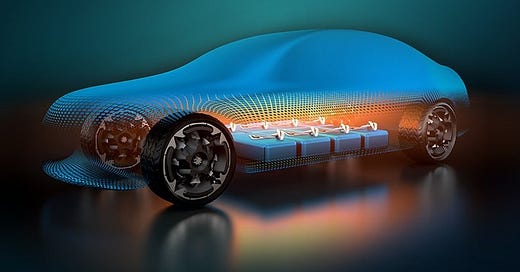Three-line summary
South Korean battery makers LG Energy Solution and Samsung SDI are expanding in the U.S. through joint ventures with GM, including new LFP and LMR battery production lines.
While EV growth has slowed, rising electricity demand is driving LG Energy Solution to ramp up U.S.-based LFP battery production for energy storage, targeting over 25% of current U.S. demand.
U.S. tariffs on Chinese batteries and grid modernization efforts are creating long-term investment opportunities for Korean battery firms, especially in the utilities sector.
What’s going on?
Major South Korean battery makers LG Energy Solution and Samsung SDI will establish LFP battery production lines in their US-based joint ventures with General Motors.
Samsung SDI will repurpose a portion of its $3.5 billion Indiana joint venture with GM. Originally intended for nickel-rich NCM batteries, the facility will now include production lines for LFP batteries.
Separately, GM and its partner LG Energy Solution have jointly developed an enhanced lithium manganese-rich (LMR) prismatic battery cell for GM's future EVs, as announced on May 13. This LMR battery uses more manganese, a less expensive material, instead of cobalt, a key EV battery component, which makes production cheaper while maintaining high energy density. GM's current EV models utilize NMCA batteries, which enhance driving range but are more expensive to produce. The shift to LMR battery chemistry is expected to enable GM to manufacture more affordable EVs in the future.
GM intends to be the first major automaker to utilize LMR batteries in its electric vehicles. Their Ultium Cells joint venture with LG Energy plans to begin commercial production of these battery cells in the US by 2028, targeting full-size electric trucks and SUVs.
What do these joint ventures actually mean?
While the GM deal with both Samsung SDI and LG Energy Solution are a boon to the South Korean battery industry, the real deal is with utilities. LG has been manufacturing vehicle batteries at its Michigan facility for over ten years. In early May, the plant expanded its production to include energy storage batteries. These storage batteries, known as LFP batteries, utilize iron and phosphate. Currently, China is the primary producer of LFP batteries.
Despite slower than expected electric vehicle adoption in the United States, rising electricity demand has prompted LG Energy Solution to adjust its factory expansion plans. The company is investing $1.4 billion to equip a new section for the production of LFP batteries. Once fully operational, these new assembly lines are projected to produce enough battery cells to meet over 25% of the current US demand for LFP batteries, based on data from LG and Benchmark Mineral Intelligence.
How does this look for investors?
Years of American initiatives to counter China's industrial policies, particularly in battery manufacturing, have culminated in a highly coordinated production line. The batteries produced by South Korean company LG Energy Solution in this Michigan factory are intended to help stabilize the balance between electricity supply and demand on American power grids.
Over the past few years, electric utilities and energy firms have invested billions in deploying numerous large batteries nationwide at locations ranging from parking lots and former industrial facilities to previous agricultural land.
These batteries are becoming increasingly vital to the electricity sector, especially in states with significant solar and wind energy production, such as California and Texas. These renewable sources offer low-cost energy intermittently, and the batteries act as a storage mechanism, absorbing excess energy during high production and releasing it when residential and commercial needs peak.
Without battery storage, power companies would need to make much larger investments in costly power generation facilities and transmission infrastructure to meet peak demand during extreme weather. Experts predict that these increased capital expenditures would lead to substantial rises in electricity costs.
US tariffs on Chinese goods, including batteries (which briefly reached 150% in April), have already inflated costs for American buyers, leading to import halts. Although tariffs were temporarily reduced in mid-May to 30%, additional levies remain. Furthermore, proposed Republican legislation could restrict access to valuable subsidies for domestic battery production and installation. LG had intended to expand its factory to supply batteries for Toyota vehicles.
LG Energy Solution anticipates that its LFP battery cells produced in Michigan will be free of Chinese components by early 2026, a significant step towards decoupling from China, which dominates the battery material supply chain. This development comes at a critical time for the US, where the future of battery companies and grid installers will determine the pace and cost of meeting increasing power demands.
The steady demand expected for LG Energy Solution’s LFP battery technology and new innovative ventures into LMR battery technology could counter China’s market dominance in the battery industry. Furthermore, US utilities are considered a reliable sector for investments, and related industries such as the battery industry may benefit. In some ways, the tariffs on China could cement the position of South Korean energy-related companies in the US market for both auto and utilities.





